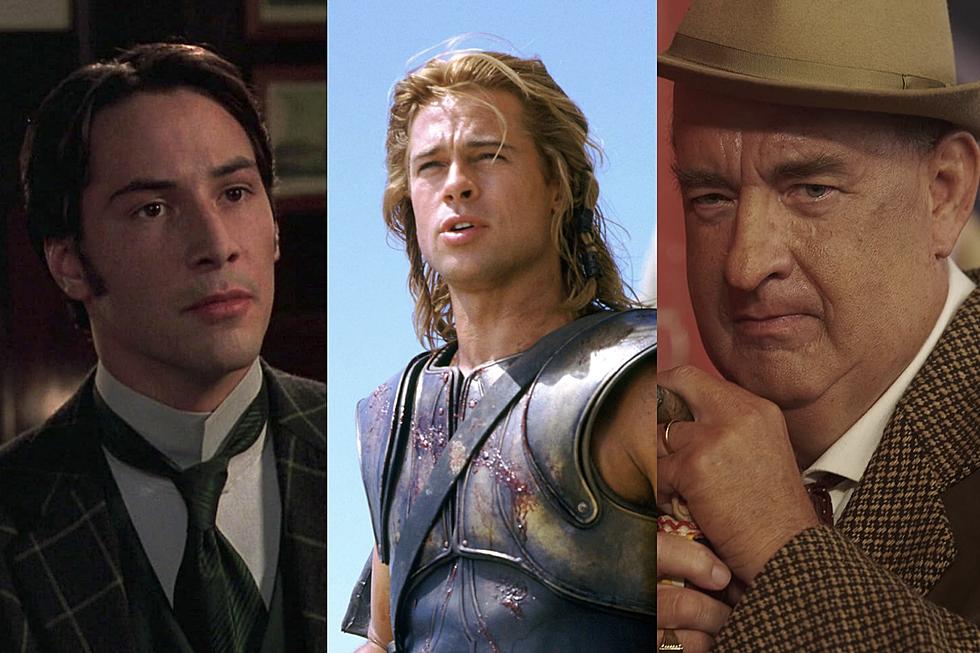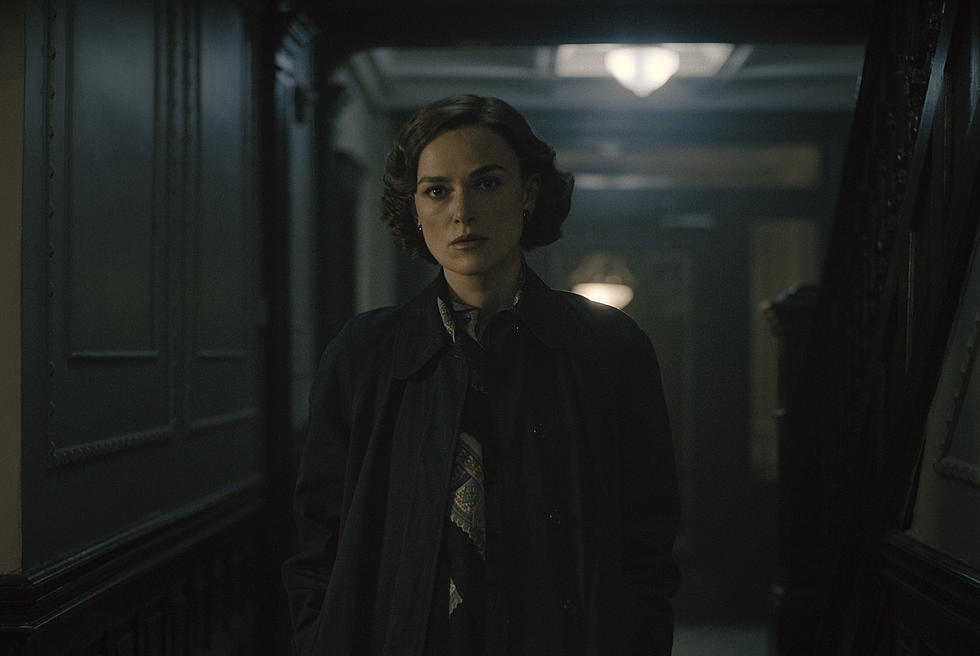
A Pirates Life for Us: In Defense of the ‘Pirates of the Caribbean’ Sequels
Disney’s Pirates of the Caribbean is one of the most financially successful film series of all time, and yet only one out of its four movies to date are remembered in a positive light. Gore Verbinski’s The Curse of the Black Pearl was a throwback to old school swashbucklers, a family-friendly adventure full of expertly choreographed action led by a rebellious hero. The original hit led to three sequels that broke multiple box office records for Disney, and pissed off legions of critics.
Despite bringing in the most money out of all four Pirates films ($423 million), Dead Man’s Chest earned a middling 54 percent on Rotten Tomatoes. And At World’s End, the third installment, fared even worse. The film made more than the first movie ($309 million), but holds a 45 percent on Rotten Tomatoes and was described by critics as an “embarrassment“ and a “convoluted misfire“ when it opened in 2007. The sequels are remembered as stains on the legacy of the first movie, and the fourth installment, On Stranger Tides, didn’t do much to help that rotting reputation. But sometimes pop culture can get it wrong. The second and third Pirates movies aren’t bad at all; they’re actually fantastic.
Let’s start with At World’s End, which is remembered with the most negativity. From a distance, the third Pirates of the Caribbean movie looks like a bit of a disaster. It’s nearly three hours long, has multiple overlapping and complicated narratives, resembles little from the first movie, and has the least amount of screentime for the franchise’s lead character. But those are the things that make At World’s End so immensely entertaining; Verbinski’s weird and wacky blockbuster takes huge risks, tosses out the formula of the first film, and finally gives its supporting cast something to do.
While The Curse of the Black Pearl followed one straightforward narrative, At World’s End throws out the playbook for that kind of movie. If the first Pirates is the Ivy League graduate of blockbusters, At World’s End is the misunderstood rebel who drops out three credits shy of a diploma. The third Pirates movie is the one where Oscar-nominee Naomie Harris turns into a giant angry goddess who explodes into a million tiny crabs. This is also the movie where the crew of the Black Pearl flip the ship upside down, sail the ship off a waterfall, and battle in the middle of a maelstrom. Geoffrey Rush also officiates a wedding while battling shark-faced pirates.
This moving is friggin’ weird, and it’s also a visual delight. Verbinski spins his camera 180 degrees under water in one sequence, then swivels around Jack Sparrow (Johnny Depp) and Davy Jones (Bill Nighy) fighting amid a massive whirlpool. In slower moments he photographs the Black Pearl cutting across pitch-black waters below a starry sky and amid icy blue glaciers. It’s the most visually striking Pirates, and Verbinski’s wildest treat next to his A Cure for Wellness.
Trapped in the purgatory of Davy Jones’ Locker, Jack Sparrow doesn’t arrive until the end of the movie’s first act. But despite popular opinion (or perhaps an increasingly popular opinion today) shoving Depp’s character to the margins was the smartest thing the franchise could have done. Depp’s flamboyant, drunken Keith Richards-riff began to lose steam by the end of Dead Man’s Chest, and seeing him in smaller doses throughout the third film allows for a new appreciation of the character’s quirks. There’s only so long these movies can ask an audience to care about a protagonist as selfish and narcissistic as Jack Sparrow. An egotist who repeatedly manipulates others for his own gain, Jack is kind of an awful guy. While he’s busy mumbling riddles to his hallucinations, At World’s End becomes an ensemble piece where the rest of the cast finally get their own storylines.
The first main character to appear on screen isn’t Jack or Will Turner (Orlando Bloom), but Keira Knightley’s Elizabeth Swan. After two movies of whining and pouting, Elizabeth finally graduates from damsel in distress to captain with an action-heavy role. Until the film’s ending, Elizabeth isn’t driven by love; she even shirks off Will’s advances with annoyance, a noticeable shift for a studio founded on romantic princesses. Meanwhile, Will has his eye on stealing back Davy Jones’ heart to free his father (a starfish-faced Stellan Skarsgaard), and Rush’s Captain Barbossa, arguably the franchise’s best character, returns for a lead role. Each of them were previously defined by one-dimensional desires for love, revenge, or greed, but here they finally get a sense of purpose. At World’s End is the first time the franchise shows an interest in its supporting characters’ emotional journeys.
The third movie also tipped the Pirates brand into slightly darker and conceptually more mature territory. The witty humor of The Curse of the Black Pearl is one of the trademarks of the Pirates movies, but the third film entertained a more somber tone. At World’s End literally opens with a young child getting lynched, and the main villain isn’t a fantastical sea creature (though Nighy’s delectable performance as Davy Jones is still plenty juicy), but a greedy government tyrant (Tom Hollander) whose machinations lead clashing pirate crews to form a democracy. At World’s End is also the most violent of the trilogy. Being the darkest installment of a series doesn’t automatically make it better, but it’s evidence that this franchise was beginning to explore something a little meatier than hunting for gold and guzzling rum.
The second film, Dead Man’s Chest, didn’t catch as much flak as its follow-up, but it was still unfairly dismissed. Though the weakest of the trilogy, the first Pirates sequel features some of the best action sequences of the entire series. Leave it to the wacky mind of Gore Verbinski to incorporate a giant water wheel into a three-way sword fight, still one of the most entertaining set pieces of the franchise, or show pirates swinging between cliffs inside globes made of human bones.
Most interesting of all, Verbinski doesn’t focus on the movie’s main monster, the Kraken, and we never even see the creature in full. Instead the action sequences at sea are all about the creative ways the pirates attempt to defeat the monster, whether it’s sacrificing their rum to make a homemade bomb or blowing off its tentacles with canons. Dead Man’s Chest takes the quirky, playful tone that was signature to Curse of the Black Pearl and runs with it even further, melding humor and suspense to make even grander and more original set-pieces.
But I don’t blame critics back in 2006 who ignored the sequel’s entertainment value. The biggest issue with the Pirates sequels is that Dead Man’s Chest is narratively pretty bare while At World’s End is overstuffed with ideas. Multiple critics called out the second movie for being nothing more than a set-up for the third, which is true. It lays all the groundwork for At World’s End, from explaining Davy Jones’ magical heart to introducing Harris’ Tia Dalma and giving Will a purpose. Some may look at the film as an easy cash grab, but Dead Man’s Chest is more than a long coming attraction. It does the necessary work of setting the scene for the bigger story that unfolds in At World’s End, which allowed Verbinski to dive right into the bizarre mythology and surreal concepts of the third film without wasting time. When revisiting the sequels recently, I realized the optimal way to enjoy the Pirates is watching them consecutively as one long two-part movie.
Dead Man’s Chest and At World’s End were shot back-to-back; they’re two parts of a whole that compliment one another. A few years later, Warner Bros. sparked the trend of splitting a franchise’s final installment into two parts with Harry Potter and the Deathly Hallows. If Disney had packaged these Pirates movies as two intertwined volumes. they might have been better appreciated for their ambitious scope.
The upcoming fifth installment might weaken the charm and excellence of the Pirates brand even further. But don’t let that distract you from the fact that Verbinski brought a distinct sense of imagination to a trilogy based on a 50-year-old theme park ride and pirate folklore.
More From ScreenCrush









